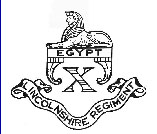10th (North Lincoln) Regiment of Foot
| 10th Regiment of Foot | |
|---|---|
 | |
| Active | 1685-1881 |
| Country |
|
| Allegiance | British Army |
| Type | Infantry |
| Size | Regiment |
| Part of | British Army |
| Garrison/HQ | Lincolnshire, England |
| Nickname | The Yeller Bellies |
| Colors | Yellow facings |
| March | Lincolnshire Poacher |
| Engagements | Ramillies, Bunker Hill and Sobraon |
| Commanders | |
| Notable commanders | John Granville, 1st Earl of Bath |
The 10th Regiment of Foot (or 10th North Lincoln Regiment) was raised on 20 June 1685 as the Earl of Bath's Regiment for its first Colonel John Granville, 1st Earl of Bath. The regiment saw action during the War of the Grand Alliance, the War of the League of Augsburg and the War of the Spanish Succession at the Battle of Blenheim, Battle of Ramillies and the Battle of Malplaquet.
History
In 1750 the regiment was sent to Ireland. In 1751 it was renamed the 10th Regiment of Foot as all British regiment were given numbers instead of the colonel's name for identification. The 10th took part in the 1759-60 action to repel Thurot at Carrickfergus during the Seven Years' War.[1]
The regiment next saw action during the American Revolutionary War at the Battle of Lexington and Concord, Battle of Bunker Hill, New York Campaign, Battle of Germantown, Battle of Monmouth and the Battle of Rhode Island. In 1778 the 10th returned home to England after 19 years service overseas. In 1781 the regiment was linked to the County of Lincolnshire for recruiting. During the French Revolutionary Wars and the Napoleonic Wars the regiment served in Egypt and in Portugal and Spain in the Peninsular War. The 10th was in India for the First Anglo-Sikh War and the bloody Battle of Sobraon where they met "Our Cousins" the 29th Regiment of Foot in the captured trenches. The 10th also fought in the Second Anglo-Sikh War and the Indian Mutiny.
The 10th Foot, 1st Battalion served in Japan from 1868 to 1871. The battalion formed a part of the British garrison charged with protecting British commercial and diplomatic interests in the recently opened treaty port of Yokohama. The leader of the battalion's military band, John William Fenton, is honored in Japan as "the first bandmaster in Japan"[2] and as "the father of band music in Japan."[3] He is also credited for initiating the slow process in which Kimi ga Yo came to be accepted as the national anthem of Japan.[4]
In 1881 the 10th Regiment of Foot became the Lincolnshire Regiment as all British regiments were given County names. Following the Second World War, it was awarded the title Royal for its service during the war, its name becoming The Royal Lincolnshire Regiment.
Currently the 2nd Battalion of the Royal Anglian Regiment (The Poachers) is the modern unit linked to the 10th Regiment of Foot.
Ensign Jeremy Lister of the 10th Regiment who saw action on 19 April 1775 in Massachusetts recorded events in his journal that was later published in a book.
Battle honours
- War of the Spanish Succession
- Blenheim 1704
- Ramillies 1706
- Oudenarde 1708
- Malplaquet 1709
- Peninsular 1816
- First and Second Sikh Wars and Indian Revolts
- Sobraon 1846
- Mooltan 1848
- Goojarat 1849
- Punjab 1857
- Lucknow 1858, 1863
Modern re-enactment group
In 1968 in preparation for the Bicentennial celebrations of the United States a modern re-enactment of the Tenth Regiment was formed by Vincent J R Kehoe of Chelmsford, Massachusetts. The group, based Lexington, Massachusetts, remains active and participates annually in the recreation of the Battle of Lexington Green on Patriot's Day. Steve Carell was part of the group, re-enacting as a fife player.[5]
See also
- Roger Elliott
- Francis Smith (British officer)
- Charles Vallancey
- The Royal Lincolnshire Regiment
- Royal Anglian Regiment
- Bermuda Volunteer Rifle Corps
- The Lincoln and Welland Regiment
Notes
- ↑ Norman Vance, ‘Vallancey, Charles (c.1726–1812)’, Oxford Dictionary of National Biography, Oxford University Press, September 2004.
- ↑ Asiatic Society of Japan. (1980). Transactions of the Asiatic Society of Japan, p. 14.
- ↑ Joyce, Colin and Julian Ryall. "British Soldier who Wrote Japanese National Anthem Honoured." The Telegraph (London). 14 October 2008.
- ↑ Joyce, Colin. "Briton who gave Japan its anthem," The Telegraph. 30 August 2005; Sabadus, Aura. "Japan Searches for Scot who Modernised Nation," The Scotsman. 14 March 2006.
- ↑ "Steve Carell Plays the Fife". [Show with David Letterman]. 20 July 2010. CBS. Retrieved 21 July 2010.
Bibliography
- Cannon, Richard (1847). Historical Record of the Tenth, or the North Lincolnshire, Regiment of Foot. London: Parker, Furnivall and Parker.
External links
- History of the Tenth Regiment
- Royal Lincolnshire Regiment (10th Foot).
- Grimsby Branch, The Royal Lincolnshire & Royal Anglian Regimental Association.
- Lincoln Branch, The Royal Lincolnshire & Royal Anglian Regimental Association.
- Army Museums Ogilby Trust: Royal Lincolnshire Regiment Museum.
- Tenth Foot. American War of Independence period re-enactors.